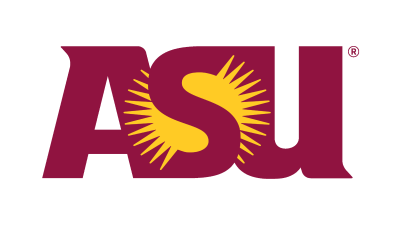

Arizona State University (Tempe campus)
Aerospace Engineering (Aeronautics), BSE
Study detals
: Bachelor's degree : Aerospace Engineering (Aeronautics), BSE ESAEROBSE : Full time : 48 MonthRequirements
Academic requirements
First-year students must:
- Have a 3.00 grade point average (GPA) (a "B" or better where "A"=4.00) from a secondary school. Some ASU programs may have higher admission or English proficiency requirements and may consider a minimum ACT or SAT score.
- Must have three years of high school coursework. (If you are currently in high school, ASU needs to see 9–11 grade coursework. If you have completed high school, ASU needs to see 10–12 grade coursework.)
- Must have and present a completed high school diploma or certificate.
Conditional admission
ASU may offer conditional undergraduate admission to international applicants to an on-campus program who meet the academic (aptitude) requirements but who are not proficient in English. This offer of conditional admission will give you time to improve your English proficiency before you start classes at ASU. Your conditional admission offer is good for up to three semesters, during which time you must meet one of these requirements to begin your ASU experience.
Competency requirements
International students who completed high school outside the U.S. are required to meet the following competency requirements:
- Math: four years (algebra I, geometry, algebra II and one course requiring algebra II as a prerequisite).
- Laboratory science: three years total (one year each from any of the following areas are accepted: biology, chemistry, earth science, integrated sciences and physics).
Provide evidence of English language proficiency (TOEFL 78,a minimum IELTS score of 6.5, a minimum PTE score of 58, a minimum Duolingo English score of 105, or a minimum Cambridge English exams score of 176.)
Speciality
STEM-OPT for international students on F-1 visas
This program may be eligible for an Optional Practical Training extension for up to 24 months. This OPT work authorization period may help international students gain skills and experience in the U.S. Those interested in an OPT extension should review ASU degrees that qualify for the STEM-OPT extension at ASU's International Students and Scholars Center website.
The OPT extension only applies to students on an F-1 visa and does not apply to students completing a degree through ASU Online.
Additional information
The aerospace engineering curriculum provides students with an education in technological areas critical to the design and development of aerospace vehicles and systems. The aeronautics concentration under the BSE program in aerospace engineering emphasizes engineering and the design of aircraft, helicopters, missiles and other vehicles that fly through the atmosphere.
Topics in required courses cover aerodynamics, aerospace materials, aircraft structures, flight mechanics, propulsion, and stability and control. Required astronautics topics include altitude control and orbital mechanics.
Students in the aerospace engineering program are expected to attain the following outcomes:
- an ability to identify, formulate and solve complex engineering problems by applying principles of engineering, science and mathematics
- an ability to apply engineering design to produce solutions that meet specified needs with consideration of public health, safety and welfare, as well as global, cultural, social, environmental and economic factors
- an ability to communicate effectively with a range of audiences
- an ability to recognize ethical and professional responsibilities in engineering situations and make informed judgments, which must consider the impact of engineering solutions in global, economic, environmental and societal contexts
- an ability to function effectively on a team whose members together provide leadership, create a collaborative and inclusive environment, establish goals, plan tasks and meet objectives
- an ability to develop and conduct appropriate experimentation, analyze and interpret data, and use engineering judgment to draw conclusions
- an ability to acquire and apply new knowledge as needed, using appropriate learning strategies
Concurrent program options
Students pursuing concurrent degrees (also known as a “double major”) earn two distinct degrees and receive two diplomas. Working with their academic advisors, students can create their own concurrent degree combination. Some combinations are not possible due to high levels of overlap in curriculum.
Accelerated program options
This program allows students to obtain both a bachelor's and master's degree in as little as five years. It is offered as an accelerated bachelor's plus master's degree with:
- Aerospace Engineering, MS
- Astrophysics and Astronomy, MS
- Exploration Systems Design (Instrumentation), MS
- Exploration Systems Design (Sensor Networks), MS
- Exploration Systems Design (Systems Engineering), MS
- Exploration Systems Design, MS
- Mechanical Engineering, MS
- Robotics and Autonomous Systems (Mechanical and Aerospace Engineering), MS
Acceptance to the graduate program requires a separate application. Students typically receive approval to pursue the accelerated master’s during the junior year of their bachelor's degree program.